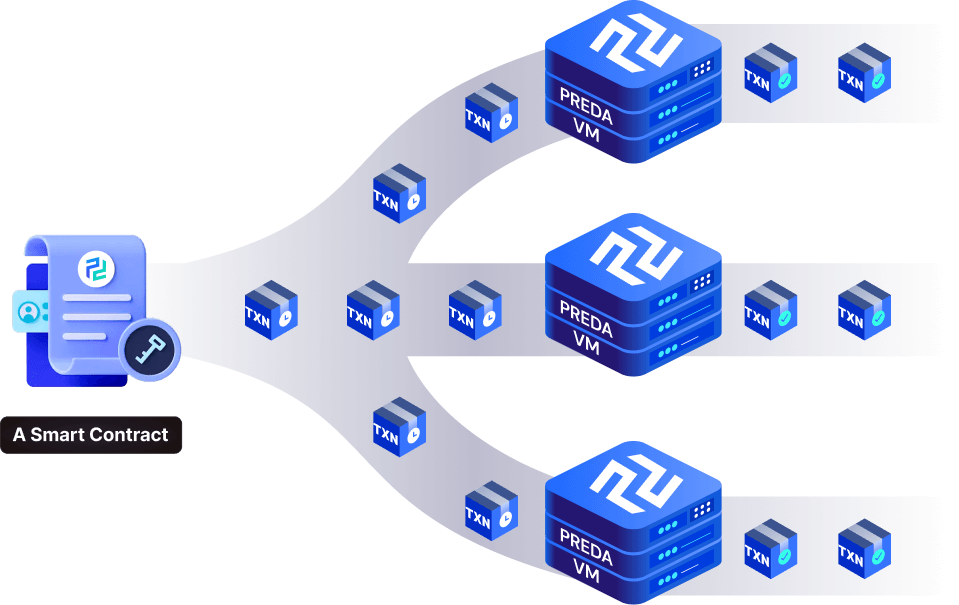
Financial Infrastructure Powering the Unprivileged Average
Dioxide built a massive scalable decentralized system to ensure the infrastructure is forever owned by people who use it, build to achieve it, and help to maintain it.

PREDA, the Programming Model
Underpinning Dioxide
PREDA, Parallel Relay-and-Execution Distributed Architecture, is a novel programming model for general smart contracts that scale in multi-chain blockchain systems.



Each smart contract in Ethereum, Near, and Polkadot executes on a single sequential virtual machine (VM), thereby constrained by the VM's processing capacity.
Meet PREDA, the revolutionary programming model that allows transactions, even those involving a single smart contract, to be divided and processed using an array of independent VMs, harnessing the total processing power of the entire network.
Collective Processing Power Unlocked by Independent VMs
In the realm of Dioxide, smart contract states are divided and maintained across distinct Virtual Machines (VM) independently. When transactions execute on one VM, they never access to the states residing on other VMs.
As a result, independent VMs can be deployed on different computers with dedicate network and computing resource. The expansion of computers translates to increased processing power, enhanced throughput and reduced gas fee, facilitating the inclusion of more applications and a wider reach of users.

New Paradigm for
Transaction Logic Flow
As smart contract states are divided, a transaction executing on one VM may depend on some parts of contract states maintained in other VMs.
Unlike previous attempts that primarily focused on moving data between different VMs, Dioxide takes a different approach. It moves the logic flow of execution around based on data dependencies, offering a more efficient strategy tailored to blockchain systems.

Scaling Out General Smart Contracts
The PREDA language, a domain-specific language (DSL), implements the PREDA programming model. This model introduces "Programmable Scopes" for state division and "Functional Relay" for handling asynchronous calls dealing with data dependency.
Any general smart contract written in the PREDA language inherently gains scalability, even those with complexity levels seen in decentralized exchanges like Uniswap.

Resources
Explore the building blocks of the PREDA Programming Model.
Understand why we built it, how we built it.




